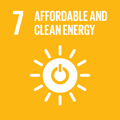- Docente: Laura Govoni
- Credits: 3
- SSD: ICAR/07
- Language: English
- Teaching Mode: Traditional lectures
- Campus: Ravenna
- Corso: Second cycle degree programme (LM) in Offshore Engineering for Energy Transition (cod. 6056)
-
from Sep 26, 2024 to Dec 19, 2024
Learning outcomes
Through this course, the students are introduced to the main offshore site investigation techniques and interpretation of soil behaviour and develop the competences required to identify the essential geotechnical inputs to foundations and pipelines design.
Course contents
Introduction. Seafloor topographical features. Main characteristics of the marine sediments, origin and distribution. Evaluation of geostatic stresses in offshore deposits.
Worked examples.
Laboratory tests and soil behaviour. Summary of fundamentals: compression and shear. Simple shear tests and triaxial tests. Cyclic loading: essential features, laboratory modelling of cyclic loading, cyclic resistance curves, failure and deformations under cyclic loading.
Worked examples.
Site investigation. Platform and vessels. Investigation methods. Drilling and coring and sampling equipment. Cone penetration test (CPT) and other offshore penetration tests. Interpretation of CPT data for the geotechnical modelling of offshore deposits.
Worked examples,Readings/Bibliography
Mark Randolph and Susan Gourvenec, Offshore geotechnical engineering, Spon, 2011
William Powrie, Soil Mechanics: Concepts and Applications, Spon, 2004
Teaching methods
Lectures are organised as follows.
Theory: through slides, videos and at the board.
Worked examples: direct application of theory, typically at the board, with students active involvement.Assessment methods
The assessment is a written exam, open books and concerns solving some worked examples.
Teaching tools
Slides and videos.
Professionals and experts are involved to provide a different perspective to the topic.
Office hours
See the website of Laura Govoni
SDGs

This teaching activity contributes to the achievement of the Sustainable Development Goals of the UN 2030 Agenda.
